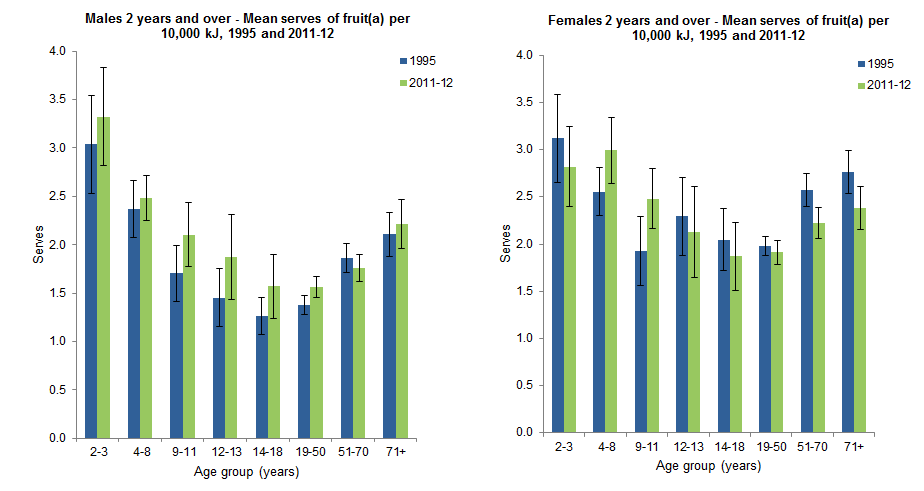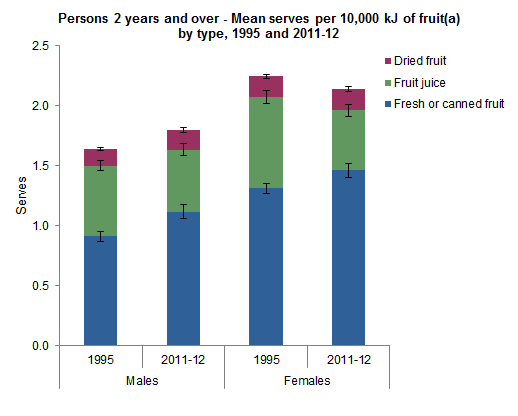FRUIT
The overall average consumption of fruit remained relatively similar in both 1995 and 2011-12 at just on 2 serves per 10,000 kJ. There was however, a 9% increase in fruit consumption among males (from 1.6 to 1.8 serves per 10,000 kJ) and a 5% decrease among females (from 2.2 to 2.1 serves).

(a) From non-discretionary sources, Based on Day 1. See Glossary for definition.
Sources: National Nutrition and Physical Activity Survey, 2011-12 and National Nutrition Survey, 1995
Between 1995 and 2011-12, the proportion of fruit serves derived from fresh/canned increased from 56% to 63%, while the proportion derived from juice dropped from 36% to 27%, although among 14-18 year olds, juice remained a relatively high contributor of fruit at 45% in 2011-12.
The overall increase among males rather than females was in part due to males having a greater increase in their fresh/canned intakes over the period (23% for males, 11% for females), but also because females had a greater decline in fruit juice consumption compared with males (-34% and -12% respectively).

(a) From non-discretionary sources, Based on Day 1. See Glossary for definition.
Sources: National Nutrition and Physical Activity Survey, 2011-12 and National Nutrition Survey, 1995
Discretionary sources of fruit
Including discretionary forms of fruitt adds an extra 0.21 of a serve per 10,000 kJ (or 11% more) in 2011-12, slightly less than the extra 0.25 serves (13% more) in 1995. In both periods, the majority source of discretionary fruit serves was from non-alcoholic beverages (52% in 1995 and 62% in 2011-12), although a considerably larger proportion was found in cereals and cereal products in 1995 (32%) than in 2011-12 (11%).
 Print Page
Print Page
 Print All
Print All